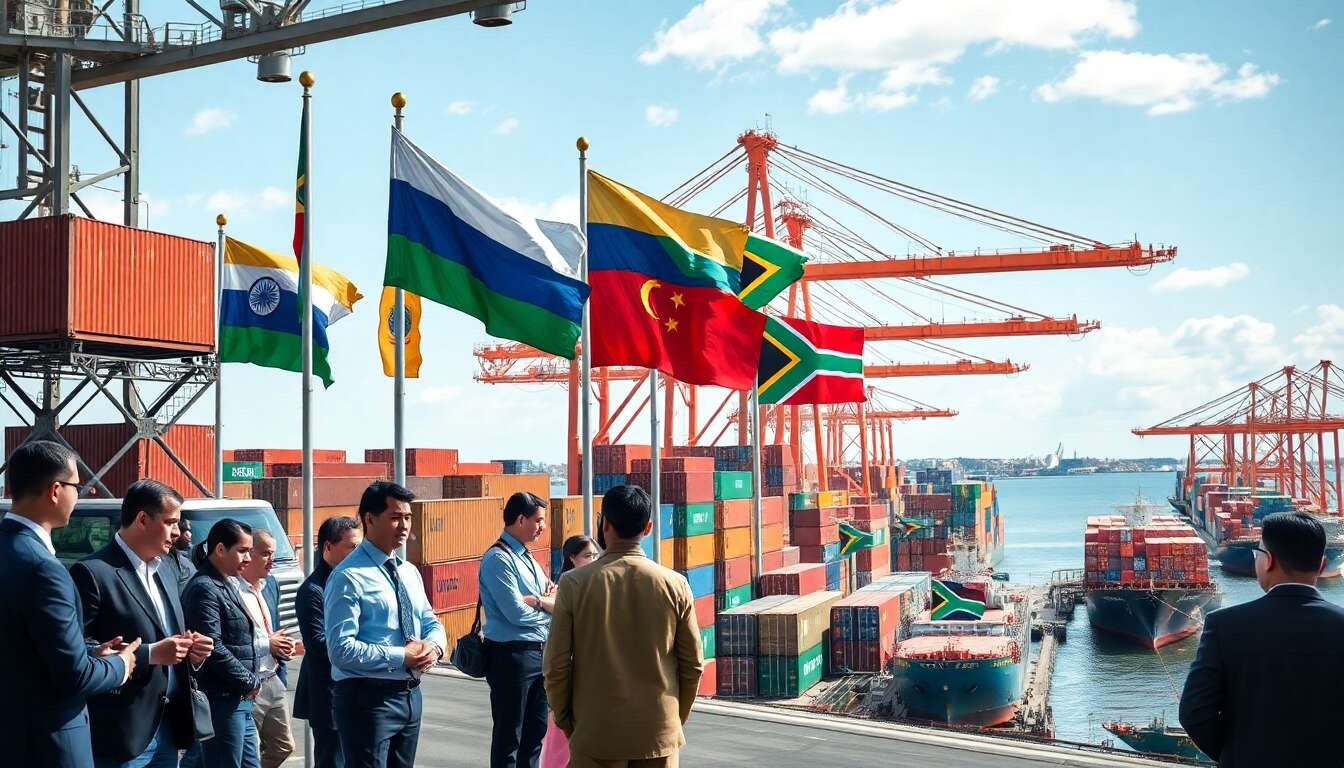BRICS, an acronym for the group comprising Brazil, Russia, India, China, and South Africa, represents a significant economic force globally. Formed officially in 2011 after an inaugural summit in 2009, the group aims to rival powers like the G7 by asserting the presence of emerging nations on the world stage.
Understanding BRICS Markets
The Formation and Purpose
BRICS was established with the intention of fostering economic growth and cooperation among its member countries. The group’s formation underscores the importance of emerging markets in the global economic landscape, providing a counterbalance to established Western powers. The founding countries recognized the potential for increased trade and investment among themselves, leveraging their large populations and natural resources.
Recent Expansion and Influence
The recent enlargement of BRICS to include countries such as Saudi Arabia, Egypt, the United Arab Emirates, Ethiopia, Iran, and Argentina marks a significant milestone. This expansion, known as BRICS+, aims to extend its influence, confirming its role as a major player in international economic relations. With this inclusion, BRICS+ now represents approximately 29% of the world GDP and 45% of the global population, further enhancing its strategic importance.
The understanding of BRICS markets sets the foundation for exploring the tangible benefits of investing in these dynamic economies.
The Benefits of Investing in BRICS

Economic Growth Potential
Investing in BRICS nations offers access to rapidly growing economies, characterized by significant industrial and technological advancements. These countries are experiencing robust GDP growth rates, driven by evolving consumer markets and increasing urbanization.
Diverse Market Opportunities
The diversity within BRICS economies presents a myriad of opportunities for foreign investors. Key sectors such as infrastructure, energy, technology, and agriculture are ripe for investment, offering potential for high returns. Investors can benefit from:
- Access to large consumer bases
- Abundant natural resources
- Government incentives for foreign investments
Strategic Alliances and Trade
BRICS countries are actively pursuing strategic partnerships and trade agreements, facilitating easier market entry for foreign businesses. These alliances aim to reduce trade barriers and encourage mutual investments, creating a more conducive environment for economic growth.
With these benefits in mind, identifying effective strategies for accessing these emerging markets becomes essential.
Strategies for Accessing Emerging Markets
Leveraging Economic Coalitions
BRICS+ focuses on strengthening economic partnerships, providing a platform for investors to engage in cross-border trade and investment. By participating in these coalitions, businesses can benefit from shared resources and expertise.
Utilizing Chinese Financing
China plays a pivotal role in BRICS through its extensive foreign financing initiatives. The « Belt and Road » initiative exemplifies China’s commitment to infrastructure development in emerging markets. Investors can capitalize on Chinese funding to gain a foothold in these regions.
Exploring Local Partnerships
Forming alliances with local businesses and governments can facilitate market entry and mitigate risks. These partnerships provide invaluable insights into local market dynamics and regulatory landscapes, enhancing investment success.
As these strategies are implemented, the impact of BRICS+ on global trade becomes increasingly apparent.
The Impact of BRICS+ on Global Trade

Shifting Economic Power
The formation of BRICS+ signifies a shift in global economic power dynamics. By reducing reliance on the US dollar and promoting alternative currencies, BRICS+ aims to create a more balanced global trade environment. This shift could lead to:
- Increased currency stability for member countries
- More equitable trade practices
- An expanded role for emerging markets in global trade
Trade Diversification
BRICS+ encourages diversification of trade routes and partners, reducing dependency on traditional Western markets. This diversification enhances the resilience of member economies, providing them with greater autonomy in international trade.
While BRICS+ presents new opportunities, it also poses challenges that necessitate careful consideration.
Challenges and Opportunities in Economic Cooperation

Navigating Political and Economic Complexities
The diverse political landscapes of BRICS+ countries present challenges in achieving seamless economic cooperation. Differences in governance, economic policies, and regulatory frameworks can pose hurdles to effective collaboration.
Harnessing Technological Advancements
Technology serves as a cornerstone for economic cooperation within BRICS+. Investing in technology-driven sectors can unlock new opportunities, driving innovation and economic growth across member countries.
Amidst these challenges, the future prospects for European investors in BRICS+ markets remain promising.
Future Prospects for European Investors
Capitalizing on Growth Potential
European investors have the opportunity to tap into the growth potential of BRICS+ markets. By aligning with regional economic objectives, they can participate in large-scale projects and initiatives, benefiting from the economic dynamism of these countries.
Strategic Sector Investments
Investments in strategic sectors such as renewable energy, infrastructure, and digital technology are poised for success. European investors can leverage their expertise and resources to foster sustainable development and innovation within BRICS+ economies.
The evolving landscape of BRICS+ presents both opportunities and challenges. Investors who navigate these complexities with strategic foresight stand to gain significantly from the burgeoning markets of BRICS+.



